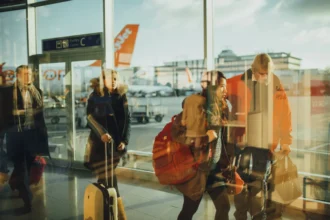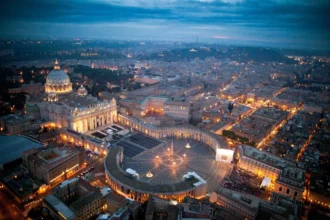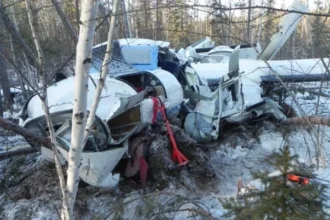Europe is sweltering under a heatwave that has smashed records, closed tourist attractions, and turned holiday itineraries upside down. If you thought summer in the Mediterranean was warm, this year it is a different level.
Temperatures have surged well into the 40s Celsius across much of the continent. Wildfires have burned through forests and farmland. Flights and trains are disrupted.
Even the places people travel thousands of miles to see are shutting their doors.
Temperatures That Broke Records
Southern Europe has taken the brunt of it. Portugal saw the thermometer hit 46.6°C in Mora, the highest ever recorded there.
In Spain, Barcelona logged its hottest June since records began in 1914. Italy and Greece have endured days over 44°C.
Turkey’s Silopi reached an almost unbelievable 50.5°C. Germany, a country more accustomed to mild summers, saw 40°C heat in several regions. Even in the United Kingdom, the first day of Wimbledon opened at 33.6°C.
This heat has not just made sightseeing uncomfortable. It has become dangerous. By early July, at least eight people had died from heat related causes in Spain, France and Italy.
Hospitals reported hundreds of cases of heatstroke and dehydration, particularly in the south of Spain and across southern France.
Governments responded with red warnings in France, Germany, Italy and the Balkans. Schools were closed. Outdoor work was suspended for long stretches of the day. Cities handed out free drinking water at major squares and train stations.
Fires That Drove People Out of Homes and Hotels
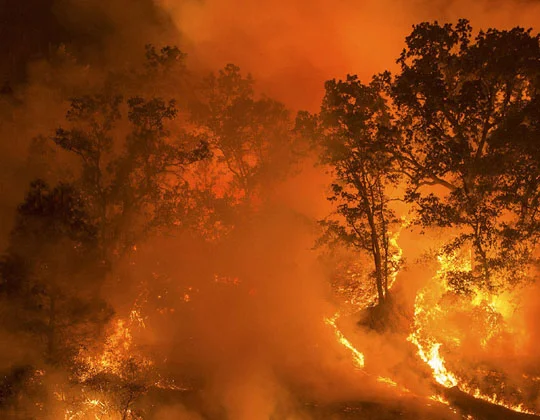
The heat dried the landscape so completely that a single spark became a serious threat. In Turkey, wildfires tore through İzmir province, forcing more than 50,000 people to evacuate.
Tourists were among those fleeing as the fire approached resorts and rural villages. İzmir’s airport was shut for safety reasons.
Greece faced an even wider crisis. In just one day there were more than 50 separate fires across the country. Villages on Crete, Kythera and Evia were evacuated. Fires threatened homes on the outskirts of Athens.
Tourists had to be rescued from beaches by the coast guard as flames moved fast and smoke thickened. The summer sky over much of the country turned orange and gray.
Cyprus saw the worst fires it has had in fifty years. Strong winds and bone-dry hills led to hundreds of homes being destroyed and multiple deaths. More than 250 firefighters were joined by helicopters and planes from Spain and Jordan to try to control the fires.
France also battled blazes near Marseille. Nearly 1,000 firefighters were mobilized. Vineyards, rural roads and train tracks were all affected.
Attractions Closing Because It Is Too Hot
For visitors, the biggest shock has been closures at famous landmarks. Paris shut the top section of the Eiffel Tower on the first two days of July when the temperature reached 40°C. In Athens, the Acropolis was closed from early afternoon to late afternoon to protect tourists from collapsing in the heat.
Belgium’s Atomium, a popular museum and viewing point in Brussels, shortened its hours when the building became unbearably hot inside. Italian cities from Rome to Bologna cancelled outdoor tours and cut late evening walking tours to prevent heatstroke.
For many travelers, this meant cancelled tickets, lost money and ruined holiday plans. Operators have started pushing morning and evening schedules to avoid the hours between noon and 5 p.m., which now come with serious health warnings.
How Heat and Fires Affect Travel Itself
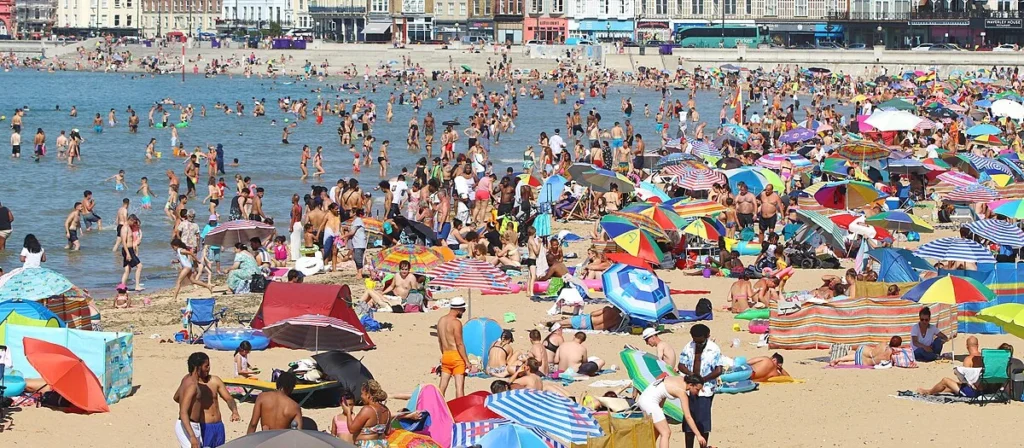
The heatwave is not only about feeling sweaty on cobblestone streets. It has disrupted every part of travel. Flights have been delayed and sometimes cancelled because of airport closures due to nearby fires. Planes that did take off were rerouted around plumes of smoke.
On the ground, railways slowed down or stopped. Metal tracks warp and expand under extreme heat. Storms that follow hot weather have also caused flash flooding in parts of Germany and Austria.
Long-distance buses in southern Europe have been delayed because of road closures near active fire zones.
Cruises along the coasts of Greece, Turkey and Spain have had to change itineraries at short notice, skipping ports that were covered in smoke.
How Tourists Are Changing Their Plans
Many travelers have realized they cannot stick to the old pattern of sightseeing from dawn to dusk. Instead, they are shifting their activities to the early morning or late in the evening.
Some are abandoning city trips altogether and heading north to places like Scandinavia or the Scottish Highlands where the climate is more tolerable.
Large travel companies report a visible change in bookings. Intrepid Travel, for example, says more than half its customers now book spring or autumn trips rather than peak summer.
Tour operators are also rethinking their itineraries to include more shaded, indoor or coastal destinations.
Advice If You Are Traveling in Europe This Summer
The most important rule is to build flexibility into your plans. Attractions can close with almost no notice. Book accommodations with air conditioning.
If you plan on walking tours or hikes, book early in the day and carry water and sun protection.
It is also wise to buy travel insurance, but read the fine print. Insurance may not cover a cancellation because of heat unless the government officially declares an emergency or unless a fire is directly affecting your travel.
Check live travel alerts every morning. Airports, train operators and city governments post updates online about closures and delays.
The Bigger Picture: Climate and Tourism
Scientists have been warning that this type of summer will become more common as the planet warms. What used to be a one in fifty year event is now happening almost every year somewhere in Europe.
Heat domes are forming earlier in the season. Dry conditions start in spring and last into October. Wildfires are faster and more destructive.
This will force big changes in how people think about travel. Tourist seasons will shift. Insurance policies will be rewritten. Cities will need to redesign attractions and transport to handle higher temperatures.
Planning Ahead
For now, the best approach is to accept that July and August in southern Europe are no longer a safe bet. If you want to avoid this level of risk, consider going in May or September, or choose cooler countries.
If you still plan to go during peak heat, be ready to change your schedule on the fly. Have backup indoor plans. Do not underestimate how fast a day of sightseeing can turn dangerous when temperatures soar.
Europe is still stunning, but this summer has shown clearly that travel planning has to adapt. Heatwaves, fires and closures are now part of the equation, not a rare exception.


